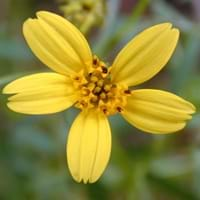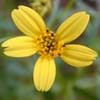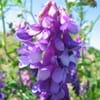Life Span
Annual
Perennial
Type
Flowering Plants
Fruit
Origin
Mexico, Central America, South America
Caribbean, South America
Types
Not available
Pinks Mammoth, African Pride, Late Gold, Geffner, Hilary White
Number of Varieties
Not Available
Habitat
Cultivated Beds
Warm and moist climatic conditions
USDA Hardiness Zone
8-11
10-13
AHS Heat Zone
12 - 1
12-9
Sunset Zone
A1, A2, A3, H1, H2, 1a, 1b, 2a, 2b, 3a, 3b, 4, 5, 6, 7, 8, 9, 10, 11, 12, 13, 14, 15, 16, 17, 18, 19, 20, 21, 22, 23, 24
Not Available
Habit
Cushion/Mound-forming
Upright/Erect
Flower Color
Yellow, Orange, Gold, Orange Red
Yellow green
Flower Color Modifier
Bicolor
Bicolor
Fruit Color
Not Available
Light Green, Sea Green
Leaf Color in Spring
Green
Light Green
Leaf Color in Summer
Green
Light Green
Leaf Color in Fall
Green
Light Green
Leaf Color in Winter
Light Green
Light Green
Leaf Shape
Pinnate
oblong or narrow-lanceolate
Plant Season
Spring, Summer, Fall
Summer
Sunlight
Full Sun, Partial Sun
Full Sun, Partial Sun
Type of Soil
Loam, Sand
Loam, Sand
The pH of Soil
Acidic, Neutral
Acidic, Neutral, Alkaline
Soil Drainage
Well drained
Well drained
Bloom Time
Indeterminate
Early Summer, Summer
Tolerances
Drought
Drought
Where to Plant?
Ground
Container
How to Plant?
Divison, Layering, Stem Cutting
Seedlings
Plant Maintenance
Medium
Medium
Watering Requirements
Requires regular watering
Do Not over Water, Does not require regular watering
In Summer
Lots of watering
Lots of watering
In Spring
Moderate
Moderate
In Winter
Average Water
Average Water
Soil pH
Slightly Acidic
Acidic, Neutral, Alkaline
Soil Type
Sandy
Loam, Sand
Soil Drainage Capacity
Well drained
Well drained
Sun Exposure
Part sun
Full Sun, Partial Sun
Pruning
Remove damaged leaves, Remove dead branches, Remove dead leaves
Prune young trees into an open vase shape
Fertilizers
All-Purpose Liquid Fertilizer
Nitrogen
Pests and Diseases
Red blotch
Anthracnose, Diplodia rot, Leaf spot
Plant Tolerance
Drought
Drought
Flowers
Showy
Insignificant
Flower Petal Number
Single
Single
Fragrant Bark/Stem
Yes
No
Foliage Texture
Fine
Medium
Foliage Sheen
Matte
Matte
Attracts
Butterflies
Fruit Bats
Allergy
Not Available
Oral Allergy
Aesthetic Uses
Beautification, Decorating walls, Hanging Basket, Showy Purposes, Used as an interior landscaping species
Not Used For Aesthetic Purpose
Beauty Benefits
Not Available
Promotes Healthy Hair, Promotes healthy skin
Environmental Uses
Air purification, Food for birds
Air purification
Medicinal Uses
Cancer, Diarrhea, Hepatitis, Inflammation, Wounds
Diabetes, Diarrhea
Part of Plant Used
Flowers
Bark, Fruits, Seeds
Other Uses
Air freshner, Condiment, For making oil for cosmetics, Garland, Making Sweet Scented Oil, Medicinal oil, Used as an ointment, Used as Ornamental plant, Used for fragrance, Used for its medicinal properties, Used for Landscaping
Used to make hair tonic, Used to promote healthy blood flow during menstruation
Used As Indoor Plant
Insignificant
No
Used As Outdoor Plant
Yes
Yes
Garden Design
Dried Flower, Landscape, Lawns and Turf
Fruit / Fruit Tree, Shade Trees, Tropical
Botanical Name
TAGETES lucida
ANNONA squamosa
Common Name
Mexican Marigold, Sweetscented marigold
Sugar Apple
In Hindi
मैक्सिकन गेंदा
सीताफल
In German
mexikanische Ringelblume
Zuckerapfel
In French
Tagetes lucida
Sugar Apple
In Spanish
caléndula mexicano
Manzana de azúcar
In Greek
μεξικάνικο κατιφέ
ζάχαρη της Apple
In Portuguese
Tagetes lucida
Pinha
In Polish
meksykański nagietka
Cukier Jabłko
In Latin
Mexicanus caltha
Sugar Apple
Phylum
Tracheophyta
Magnoliophyta
Class
Magnoliopsida
Magnoliopsida
Order
Asterales
Magnoliales
Family
Asteraceae
Annonaceae
Clade
Angiosperms, Asterids, Eudicots
Angiosperms, Magnoliids
Subfamily
Asteroideae
Maloideae
Number of Species
Not Available
Not Available
Season and Care of Mexican Marigold and Sugar Apple
Season and care of Mexican Marigold and Sugar Apple is important to know. While considering everything about Mexican Marigold and Sugar Apple Care, growing season is an essential factor. Mexican Marigold season is Spring, Summer and Fall and Sugar Apple season is Spring, Summer and Fall. The type of soil for Mexican Marigold is Loam, Sand and for Sugar Apple is Loam, Sand while the PH of soil for Mexican Marigold is Acidic, Neutral and for Sugar Apple is Acidic, Neutral, Alkaline.
Mexican Marigold and Sugar Apple Physical Information
Mexican Marigold and Sugar Apple physical information is very important for comparison. Mexican Marigold height is 30.50 cm and width 30.50 cm whereas Sugar Apple height is 460.00 cm and width 610.00 cm. The color specification of Mexican Marigold and Sugar Apple are as follows:
Mexican Marigold flower color: Yellow, Orange, Gold and Orange Red
Mexican Marigold leaf color: Green
Sugar Apple flower color: Yellow green
- Sugar Apple leaf color: Light Green
Care of Mexican Marigold and Sugar Apple
Care of Mexican Marigold and Sugar Apple include pruning, fertilizers, watering etc. Mexican Marigold pruning is done Remove damaged leaves, Remove dead branches and Remove dead leaves and Sugar Apple pruning is done Prune young trees into an open vase shape. In summer Mexican Marigold needs Lots of watering and in winter, it needs Average Water. Whereas, in summer Sugar Apple needs Lots of watering and in winter, it needs Average Water.





